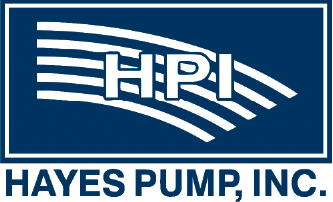Metering/Dosing Pump Types and Applications

Metering/Dosing Pumps Explained: Types, Applications, and Selecting the Right Solution
Metering and dosing pumps are indispensable tools in processes where precise and controlled quantities of liquid need to be added to another fluid stream. From water treatment to pharmaceutical manufacturing, these pumps ensure accuracy, reliability, and efficiency in critical applications.
If you're exploring metering or dosing pumps for your operations, this guide provides detailed insights into how they work, the types available, their benefits, and the industries they serve.
What Are Metering/Dosing Pumps?
Metering or dosing pumps are specialized pumps designed to deliver precise amounts of fluid. These pumps are ideal for industries that require accuracy, such as chemical processing or pharmaceutical production, where even small deviations can impact product quality.
What Makes Metering Pumps Essential?
- They ensure precise chemical dosing, preventing waste or excess usage.
- They are customizable for various fluids, ranging from those that tolerate corrosive chemicals to high-viscosity liquids.
How Do Metering/Dosing Pumps Work?
Metering pumps operate by moving a defined amount of fluid into a holding chamber before injecting it into a fluid stream. This controlled process ensures that the desired volume of fluid is consistently delivered.
The key mechanism varies by pump type, but they all rely on precision components to maintain accuracy. The working principle ensures optimal fluid dosage under diverse operating conditions.
What Types of Metering/Dosing Pumps Are Available?
Understanding the various types of metering pumps can help you select the most suitable option for your specific application.
1. Piston/Plunger Metering Pumps
How They Work:
A piston or plunger moves in a housing chamber, drawing fluid in during the suction stroke, and pushing it out during the discharge stroke. The chamber's volume and piston position determine the precise dosing quantity.
Advantages:
- Extremely accurate dosing
- Compact and straightforward design
Drawbacks:
- Prone to pulsating discharges
- Wear and tear due to constant piston-cylinder interaction
2. Mechanical Diaphragm Pumps
How They Work:
These pumps replace the piston with a diaphragm that expands and contracts to move fluid. The diaphragm's motion is controlled by an eccentric cam, converting rotary energy into reciprocating motion.
Advantages:
- Hermetically sealed design prevents fluid leakage, making it ideal for toxic or hazardous substances
- Lower maintenance needs compared to piston pumps
Drawbacks:
- Pulsating discharge, though this can be minimized with double-diaphragm configurations
3. Hydraulic Diaphragm Pumps
How They Work:
Fluid flow is controlled via a diaphragm actuated by hydraulic force. Adjusting the hydraulic pressure results in precise expansion and contraction of the diaphragm.
Advantages:
- Handles higher loads than mechanical diaphragms
- Double-diaphragm systems deliver smooth, pulsation-free discharge
- Extremely durable for heavy-duty applications
Drawbacks:
- Requires more robust support systems and higher initial costs
What Are the Applications of Metering/Dosing Pumps?
These pumps play a vital role in industries where precise fluid injection is critical. Below are sectors that commonly rely on them:
1. Water Treatment
Metering pumps are essential in water purification systems for introducing chemicals like chlorine or coagulants.
2. Pharmaceutical Manufacturing
Highly precise dosing is required for combining drugs or delivering solvents with consistency.
3. Food and Beverage
Used in processes like adding flavoring agents, preservatives, and other additives to products.
4. Chemical Processing
Metering pumps handle aggressive or corrosive chemicals to create industrial blends or maintain reactions.
5. HVAC Systems
Applied in managing glycol mixtures for temperature control functions.
Frequently Asked Questions About Metering/Dosing Pumps
Q1. Which industries benefit the most from metering pumps?
Metering pumps are highly effective for water treatment, pharmaceuticals, food production, and chemical industries due to their precision and customization capabilities.
Q2. How do hydraulic diaphragm pumps differ from mechanical ones?
While both use diaphragms, hydraulic pumps use fluid pressure for actuation, providing smoother flow and handling heavier loads than mechanical diaphragm pumps.
Q3. Are there ways to minimize pulsation in these pumps?
Choosing a double-diaphragm configuration or incorporating pulsation dampeners can significantly reduce pulsation effects.
Q4. What types of fluids can metering pumps handle?
Metering pumps can accommodate a wide range of fluids, including those with low to high viscosities, corrosive chemicals, and even hazardous materials, depending on the pump type.
Q5. How do I maintain dosing pump accuracy?
Regular calibration, inspection of seals and diaphragms, and ensuring clean fluid pathways enhance pump accuracy and prolong operational life.
How to Choose the Right Metering/Dosing Pump
Selection depends on key operational factors, including:
Fluid Properties
- Consider viscosity, corrosive nature, or if the fluid has solid particles.
Required Accuracy
- Applications needing extreme precision will prefer piston/plunger pumps.
Operating Pressure and Flow Rates
- Ensure the pump can handle the system's pressure and achieve the required dose.
Durability Expectations
- For demanding environments, opt for hydraulic diaphragm pumps that offer higher longevity.
Why Choose Hayes Pump for Metering/Dosing Pumps?
At Hayes Pump, we specialize in matching the right technology to your requirements. Whether you need detailed advice for selecting a dosing pump or technical support for existing systems, we are here to help.
-
Expert Guidance
Our engineers analyze your unique setup to recommend pumps tailored to your needs. -
Trusted Manufacturers
We collaborate with leading brands, ensuring top-tier options for every use case. -
Comprehensive Support
From consultation through installation and maintenance, Hayes Pump provides end-to-end solutions.
Contact us today to explore our range of metering and dosing pumps or consult with our experts about your specific applications. Get the precision and reliability you need!




